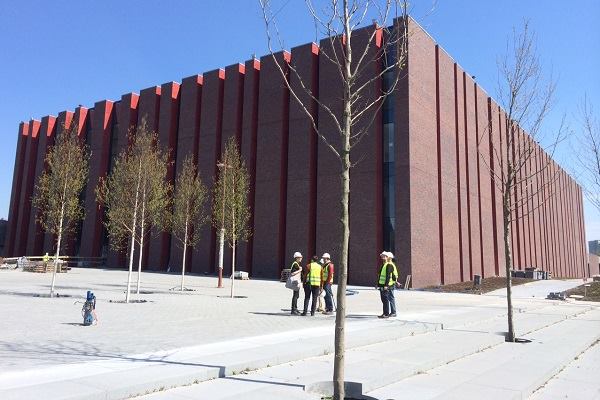Is there good minimalist institutional architecture of recent vintage? I recently made a trip to Katowice, a former mining town in Southern Poland to see the new seat of the National Polish Radio Symphony Orchestra, designed by Tomasz Konior, which is nearing completion. I admired the simple, but beautifully put-together building, and afterward I sat down for lunch with Konior, curator Marcin Szczelina, and several others. Konior is an outspoken critic of the kind of monumental modernism that is common not only in Katowice but in many Eastern European cities, and of the kind of expressive form-making that he sees as defining too many of our new cultural institutions.
It is an argument I have heard from the likes of David Chipperfield, Hon. FAIA, all too often, and all too often it seems a tad too self-defensive. Chipperfield—who seems to be designing every museum Renzo Piano, Hon. FAIA, is not—complains that Zaha Hadid, Hon. FAIA—who has designed four major museums in the last two decades—gets all the work. Konior has reason to rebel against the communist-era buildings that often were badly detailed or placed without regard to any context and the “look-ma-no-hands” exploits that festoon Poland today. He wants things simple and well-made. The real question is whether it is possible to make a cultural institution today that is simple, clear, respectful of its context, economical in its expenditures (which Chipperfield’s and Piano’s usually are not), and represents the character of its programs in a clear manner.
After lunch, I made a list of minimalist art museums of recent vintage I think accomplish all that and presented it to Konior at dinner that evening. The list included, in no particular order: Peter Zumthor’s Kunstahaus Bregenz, Herzog & de Meuron’s de Young Memorial Museum, Diller, Scofidio + Renfro’s Institute of Contemporary Art in Boston, Brad Cloepfil’s Clyfford Still, and Steven Holl’s Nelson-Atkins Museum of Art.
I came up with more and purer examples by going back further to include, for instance, Gigon & Guyer’s addition to the Kunstmuseum Winterthur and Kirchner Museum Davos, and Piano’s Cy Twombly’s Pavilion. I could also add beautiful minimalist renovations, including Chipperfield’s Altes Museum, but what became clear to me in looking at my core list was how tortured, warped, and otherwise deformed even the best of these buildings appear. Even though they are all more or less boxes (or, in Nelson-Atkins’ case, a collection of boxes), their exteriors are distended or impacted by their responses to their site. They cantilever or send shoots out to engage the outside world, wrap themselves in a second skin, or play with their own presence.
You cannot design just a box, in other words. You have to account for the complexities of what goes on inside and outside the building—and the marks of that encounter show in the best buildings. It is the attempt to smooth over such complexities that creates what to me are the uncomfortable, corseted appearances of so many recent minimalist buildings. These forced minimalist boxes either turn their reactions to the sun, entry, or surrounding materiality into ornament, (Piano) or they give us a surfeit of emptiness and stark surface that reminds me of nothing so much as neo- and proto-Nazi architects’ (Heinrich Tessenow and Albert Speer) attempts to impose order.
There is no reason to flail around or break the box so often that you forget what was so bad about that simple container. But there are no simple and minimal answers. There is only good architecture (responsive, expressive, clear, and appropriate) and bad architecture. Luckily Konior makes pretty good architecture—more about that later.
Aaron Betsky is a regularly featured columnist whose stories appear on this website each week. His views and conclusions are not necessarily those of ARCHITECT magazine nor of the American Institute of Architects.
